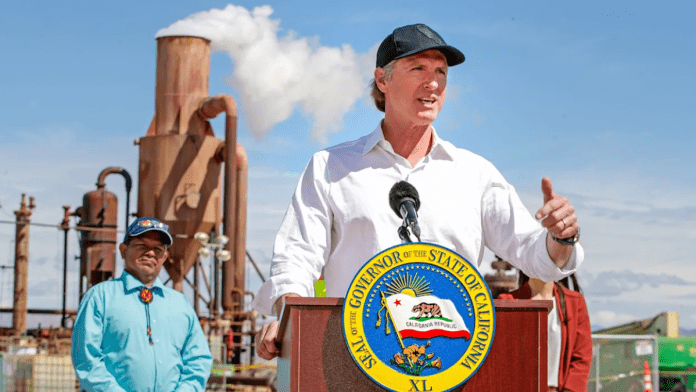🕒 Last updated on September 13, 2025
In the early hours of Wednesday, California lawmakers struck a major deal to extend the state’s program for reducing greenhouse gases known as cap and trade.
California’s cap and trade program extended to 2045
This system, which was set to expire earlier, will now continue until 2045. The agreement came after weeks of private discussions that caused delays for other important bills.
Cap and trade is a program that sets a limit on how much pollution companies can release into the air. If they want to go beyond the limit, they must buy permits. This creates a financial reason for businesses to reduce harmful emissions. California has relied on this program for years as a key tool to cut down on greenhouse gases that cause climate change.
Extending it for another two decades marks one of the most significant steps the state has taken to push forward on its climate goals. Supporters argue it gives certainty and stability to both the state and the industries that must comply. Critics, however, worry that such a long extension without major changes could give polluters too much room to keep buying their way out of emission cuts.
The late-night compromise reflects the balancing act California faces: maintaining its global reputation as a climate leader while also handling the political fights that such policies often bring.
Race Against Time: Newsom fast-tracks permits to save billions in tax credits
Compromises on oil drilling and offshore pipelines
Alongside the cap-and-trade extension, lawmakers approved a surprising set of measures tied to oil production. New permits for drilling in California will move forward. In addition, the state will work to rehabilitate a long-closed offshore pipeline that once carried crude oil.
This part of the deal stirred controversy because California has been known for trying to limit fossil fuel use. By allowing new drilling and reviving an old pipeline, the state is making room for more domestic oil output. Supporters say these steps will help reduce reliance on foreign oil and protect jobs in energy regions. Opponents warn it runs against the state’s climate message and could slow the shift toward clean energy.
The decision shows how energy policy in California is shaped by competing interests. While one set of laws focuses on reducing emissions, another makes space for more oil drilling. Lawmakers described it as part of a wider compromise where each side had to give ground to achieve a final deal.
For people living near drilling sites or along the pipeline routes, the changes may bring both hope for jobs and concern about environmental risks. Pollution from drilling has long been a sensitive issue in many communities, especially those already dealing with high levels of industrial impact.
Wildfire fund and clean power market agreements
The overnight talks also produced deals on other major issues. Lawmakers voted to add $18 billion to California’s wildfire liability fund. This fund is used to cover costs when utility equipment sparks devastating fires. With hotter summers and drier conditions increasing fire risks, the fund is seen as vital to protecting communities and keeping utilities stable.
United Kingdom Unveils 100 New Sanctions to Cut Funding for Russia’s War in Ukraine
Another part of the package focuses on electricity. California will now link its grid more closely with nearby states. This creates a shared electricity market, allowing California to sell extra clean energy when the state produces more than it needs. In return, it can draw power when demand spikes. Officials believe this step will make the grid stronger, cheaper, and more reliable.
A new state fund was also established to monitor pollution cleanup in communities most affected by industrial activity. This fund aims to track whether promised projects actually reduce pollution in disadvantaged neighborhoods. Such communities often face higher health risks from poor air quality and are frequently left out of policy benefits.
Together, these parts of the deal show how California is trying to juggle several big issues at once: reducing greenhouse gases, managing oil production, preventing wildfires, and ensuring energy reliability. The package was reached after tense negotiations, showing how climate policy continues to stir heated debate in the state legislature.

